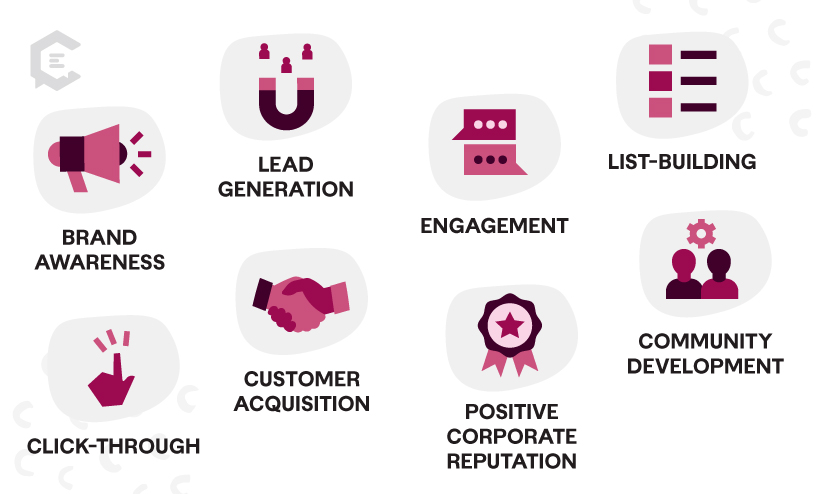What are marketing goals?
Marketing goals are the key areas that brand marketers should identify — both long-term for a company and short-term in advance of a campaign — to measure a business’ and its products’ success.

Why is it important to have marketing goals?
Setting marketing goals is essential because that is how a company knows what to push budget and resources toward and how to measure the campaign’s results or spending. From a long-term standpoint, goals empower a company to measure what it’s working toward in terms of profitability, influence, and market penetration.
Without setting goals, companies may be able to attain some measure of success, but they won’t necessarily know whether this success is enough to sustain their company. Sustainability is based on providing long-term value while operating economically and socially responsibly. Without long-term value or economic sustainability, a company will not survive, so marketing goals are essentially a way to optimize efficiency and survival.
With marketing teams constantly being asked to do more with less, setting and meeting your marketing goals helps justify the budgetary allotment and makes the powers feel secure in their investment.
How to determine your marketing goals
It’s important to remember that marketing goals do not always have to come back to revenue. Content marketing, in particular, is difficult to quantify, so you may have other objectives and key performance indicators (KPIs) that will be your benchmarks for success.
With that in mind, different initiatives will have different goals. A new product launch, for example, will have a different set of goals from your social media strategy.
Some common marketing goals include:
- Brand awareness
- Lead generation
- Engagement
- List-building
- Click-through
- Customer acquisition
- Positive corporate reputation
- Community development
These can be broken down even further. For example, “list-building” could mean having goals like increased numbers of:
- Email captures
- Mailing addresses
- Subscribers
Generally, the CMO and marketing directors set top-level goals, while the managers and coordinators are tasked with carrying out the tactical part. So, for example, if a CMO decides that a certain type of targeted SEO content is important to bring in potential users, the director and manager will work together to come up with a plan and then execute it through the work of the specialized strategists, various internal staffers, and managerial oversight.
How to determine if you hit your marketing goals
Today, more information is available at our fingertips than we’ll likely know what to do with! However, if you have your goals clearly established, you’ll know exactly what information you need to determine whether you’ve met, exceeded, or fallen short of those goals.
Content marketing may be more difficult to quantify, but there are still some key metrics you can consider to measure your efforts against:
- Conversion rate. What percentage of visitors act on conversion actions like subscribing to your newsletter or buying your product?
- Website traffic. Does your content drive traffic to your site?
- Sales revenue. How does your content contribute to your sales funnel? Calculate the revenue generated from those content-driven conversions.
- Customer retention. Track customer loyalty, repeat purchases, and other retention metrics to determine your content’s impact on customer retention.
Just make sure you’ve got the right tools for the trade, including:
- Content marketing software. Modern platforms like WordPress let you track user engagement, conversion metrics, and content performance.
- Marketing automation platforms. Most platforms you’ll use to automate your content marketing processes will have analytics features to track and measure lead generation, conversion rates, and user interactions.
- Web analytics. Don’t underestimate the power of Google! Its analytics function tracks and reports website traffic, providing valuable insights into user behavior and website performance (among others).
ClearVoice can help reach your marketing goals
At ClearVoice, we understand that each brand has different needs, resources, and goals to achieve. That’s why our custom content solutions are built around what YOU need.
Have content gaps? We’ll fill them. Need to produce content at scale? We’ll get you there. Want better SEO and increased site traffic? That’s our bread and butter.
Content marketing is like going to the gym. You’re never “done.” You might hit your goals, but that just means you get to set new ones! If your content team is already stretched thin or you’re just getting started with content marketing, ClearVoice can create a custom content plan for your needs and resources so that you’ll never pay for content you don’t want or won’t use.
Let us help you reach those marketing goals to get back to what you do best: focusing on your brand and your customers. Talk to a content specialist today!






